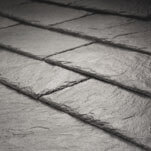Roofing Material Types
There are a number of different roofing types available. The team at Harris can help you decide which is best for your home and have it professionally installed.
Free Estimates and Consultations
Asphalt Three-Tab Roofing Shingles

Architectural Laminate Roofing Shingles

Architectural laminate roof shingles are a popular choice of roofing shingle with homeowners and roofers. Architectural laminate roof shingles create depth and the appearance that is similar to wood shake shingles. The roofing shingles contain more than one layer of tabs which make them extra thick. Compared to the older style 3-tab residential roofs shingles, architectural laminate roof shingles are more energy-efficient, provide better wear, fire protection and shield against blow-offs from the wind.
Wood Shake Roofing Shingles

Slate Tiling

Metal Roofing

Mule Hide Low Slope Roofing

EPDM Flat Roofing

TPO Flat Roofing
